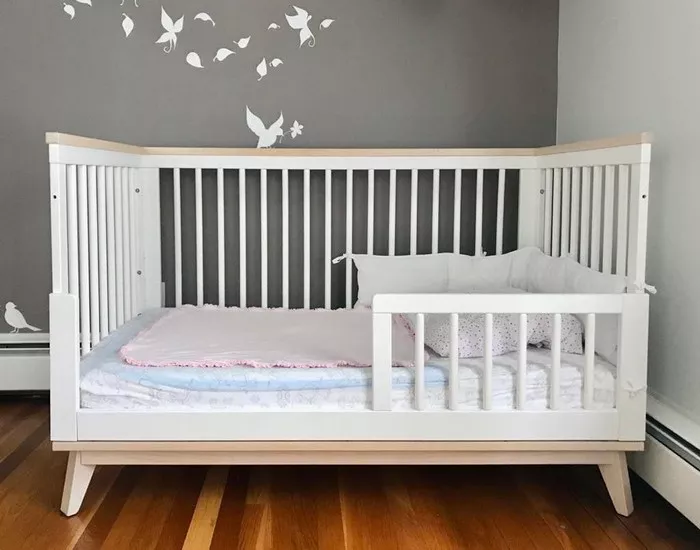In recent years, the safety of infant products has become a paramount concern for parents worldwide. Among these concerns, the safety of cribs holds particular significance as infants spend a substantial amount of time sleeping in them during their early months and years. As a result, prospective parents often find themselves grappling with questions regarding the safety and reliability of various crib brands, including the renowned IKEA. In this comprehensive article, we delve into the safety standards, design features, and regulatory compliance of IKEA cribs to determine whether they provide a secure sleeping environment for infants.
Understanding Safety Standards and Regulations
Before delving into the specifics of IKEA cribs, it is crucial to establish a foundational understanding of the safety standards and regulations governing infant products. In the United States, cribs are subject to rigorous safety standards set forth by the Consumer Product Safety Commission (CPSC). These standards encompass various aspects such as crib slat spacing, structural integrity, mattress support, and the absence of hazardous substances in materials.
IKEA, as a global retailer, adheres to stringent safety regulations not only in the United States but also in numerous countries where its products are sold. This commitment to compliance ensures that IKEA cribs meet or exceed the safety requirements mandated by regulatory authorities.
Design Features and Safety Considerations
One of the fundamental aspects of crib safety lies in its design features. IKEA cribs are engineered with a focus on simplicity, functionality, and safety. Here are some key design elements that contribute to the safety of IKEA cribs:
1. Sturdy Construction: IKEA cribs are typically constructed from durable materials such as solid wood or metal, ensuring structural integrity and stability.
2. Adjustable Mattress Heights: Most IKEA cribs feature adjustable mattress heights, allowing parents to lower the mattress as the child grows and becomes more mobile. This feature helps prevent accidents such as falls over the crib railing.
3. Safe Slat Spacing: The spacing between crib slats is carefully designed to prevent infants from getting their heads stuck while still allowing adequate airflow.
4. Non-Toxic Finishes: IKEA prioritizes the use of non-toxic finishes and materials in its crib construction, minimizing the risk of exposure to harmful substances.
5. Sturdy Hardware: High-quality hardware and fastenings ensure that the crib remains securely assembled without the risk of components coming loose.
By incorporating these design features, IKEA cribs aim to provide a safe and secure sleeping environment for infants, meeting the expectations of discerning parents.
Customer Reviews and Feedback
In assessing the safety of IKEA cribs, it is valuable to consider the experiences and feedback of customers who have used these products firsthand. Online platforms and forums abound with reviews and testimonials from parents sharing their opinions and insights regarding IKEA cribs.
While the majority of reviews are positive, praising the affordability, durability, and simplicity of IKEA cribs, some concerns have been raised regarding assembly instructions, mattress fit, and occasional manufacturing defects. However, it is important to note that isolated incidents or individual experiences do not necessarily reflect the overall safety and quality of IKEA cribs.
Recall History and Response
Like any manufacturer, IKEA has occasionally issued product recalls in response to safety concerns or defects identified in its cribs. However, it is noteworthy that IKEA has demonstrated a proactive approach to addressing safety issues, promptly notifying consumers and offering remedies such as refunds, replacements, or repair kits.
In instances where cribs are recalled, IKEA works closely with regulatory authorities to investigate the root causes of the problem and implement corrective actions to prevent recurrence. This commitment to transparency and accountability underscores IKEA’s dedication to ensuring the safety of its products and maintaining consumer trust.
Tips for Safe Crib Use
While IKEA cribs are designed with safety in mind, it is essential for parents to follow recommended guidelines and practices to further enhance infant safety:
1. Proper Assembly: Carefully follow the assembly instructions provided by IKEA to ensure that the crib is assembled correctly and securely.
2. Mattress Fit: Use a properly fitting mattress specifically designed for the crib to prevent gaps between the mattress and crib sides, reducing the risk of entrapment.
3. Regular Inspections: Periodically inspect the crib for any signs of wear, damage, or loose components, and promptly address any issues that may compromise safety.
4. Avoiding Hazardous Accessories: Refrain from using crib accessories such as bumper pads, pillows, or loose bedding, as these items pose suffocation hazards.
5. Supervision and Monitoring: Always supervise infants while they are in the crib and ensure that the crib environment remains safe and free from potential hazards.
By adhering to these best practices, parents can create a safe sleeping environment for their infants, maximizing their peace of mind and ensuring optimal safety.
Conclusion
In conclusion, IKEA cribs are designed and manufactured with a strong emphasis on safety, incorporating features that meet or exceed regulatory standards. Through sturdy construction, thoughtful design, and proactive quality assurance measures, IKEA strives to provide parents with reliable and affordable crib options for their little ones.
While occasional concerns or issues may arise, IKEA’s commitment to customer safety and satisfaction is evident through its responsive recall procedures and ongoing efforts to improve product quality. By pairing IKEA cribs with responsible use and supervision, parents can rest assured knowing that their infants are sleeping soundly in a secure and nurturing environment.


